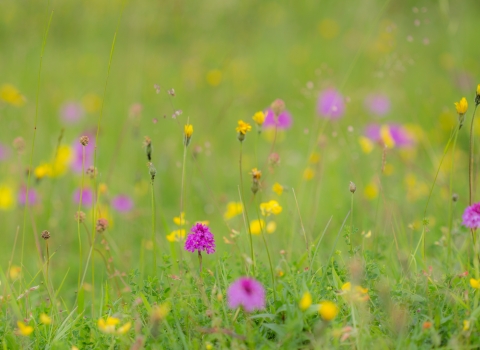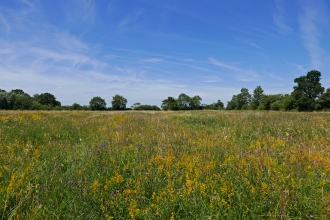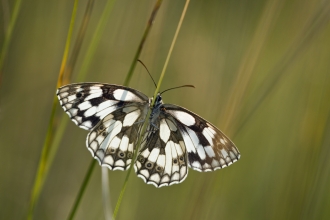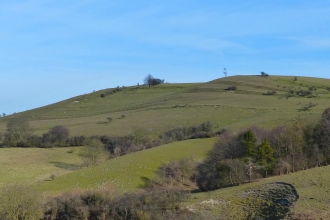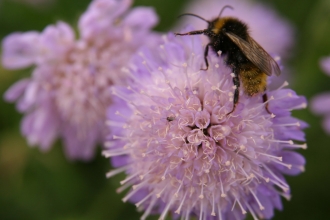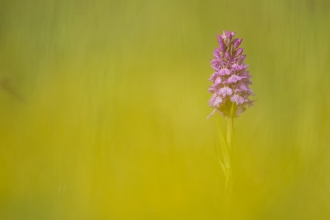Superstars
Orchids are the superstars of the wild flower world. In spring and summer, join the search for the masters of mimicry cleverly fooling their pollinators, including the furry-flowered bee orchid, or its more understated cousin, the fly orchid. Sample the perfume of a fragrant orchid, or the spectacular purple haze of a meadow covered in green-winged or early purple orchids. Deep in the woods, look for the bizarre bird’s-nest orchid growing in leaf litter; a parasite that steals its nutrients from the roots of trees, and has dispensed with the green chlorophyll that other plants use to make their food in favour of a creamy-brown colour all over.
Finding orchids
You can see orchids throughout our three counties and the UK, flowering between April and September, hitting peak flowering season from May. Tempting as it may be, don’t pick the flowers. Orchids look their best out in the wild, and some species are legally protected so you could be breaking the law.
Of the fifty or so species native to the UK, some are surprisingly common and widespread, while others are sought after rarities found only in a few select places. The key to finding orchids is to do your research beforehand: target the right habitats at the right times of year.
The bee orchid is Bedfordshire's county flower - look for them in sandy soil. On chalk grassland, look for the dense pink flower spikes of pyramidal orchids and the taller, cylindrical spikes of fragrant orchid, which smell sweetly, especially in the evenings. In ancient woodlands look out for the bird's nest orchid and white helleborine, which has adapted to dark woodland conditions by pollinating itself.
Be very careful where you tread: as well as the obvious flower spikes there will be plenty of non-flowering leaf rosettes which you should avoid trampling. Stick to the paths and take some binoculars with you.

